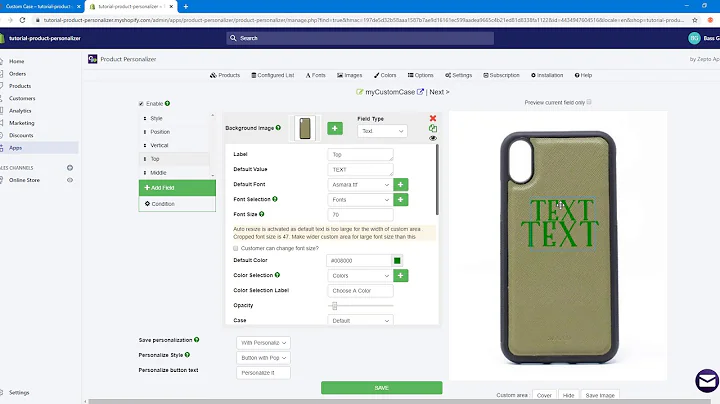Unlocking Shopify's Customization Power with Meta Objects
Table of Contents
- Introduction
- What are Meta Objects?
- Meta Objects vs. Meta Fields
- Use Cases for Meta Objects
- Creating Meta Objects
- Using Meta Objects in the Customizer
- Building a Designer Section on Product Pages
- Creating an Overview Page with Liquid Code
- Conclusion
1. Introduction
In this article, we will take a detailed look at Shopify's new Meta Objects. We will explore what they are, how they differ from Meta Fields, and when to use them. Additionally, we will provide examples of how to use Meta Objects both with and without code in the Customizer and theme files.
2. What are Meta Objects?
Meta Objects provide a new way to define and manage custom data models across a Shopify store. They allow you to store additional information that doesn't fit into default data models like products, blog posts, or pages. For example, if you're running a fashion store, you might want to have a list of different designers you work with, including their names, descriptions, profile images, and website links. Meta Objects enable you to create your own objects and define the input fields needed to store this information.
3. Meta Objects vs. Meta Fields
While Meta Objects allow you to define completely new data models, Meta Fields are meant to extend existing data models. If you need to store additional information directly on your products, such as ingredients or energy efficiency class, Meta Fields are the appropriate choice. However, there is a case where Meta Objects and Meta Fields intersect. You can put a Meta Object inside a Meta Field. For example, you can use a Meta Object to represent a designer and then reference that Meta Object in a Meta Field called "designer" on your product pages.
4. Use Cases for Meta Objects
Some potential use cases for Meta Objects include:
- Creating custom data models for unique entities in your store, like designers or artists.
- Storing additional information related to products, such as nutritional facts or care instructions.
- Building complex data structures for specialized features, like multi-step order forms or custom checkout fields.
5. Creating Meta Objects
To create a Meta Object, you can access the Meta Objects settings through the Shopify admin dashboard. Once you define a new object, you can add fields such as text fields, file pickers, or URL pickers to match the data you want to store. After saving the definition, you can add entries and input the relevant information for each entry. This allows you to create as many data entries as needed.
6. Using Meta Objects in the Customizer
Shopify's Customizer provides a no-code solution for using Meta Objects. You can create custom sections on product pages and add dynamic content using the data stored in Meta Objects. By using the Dynamic Data Source feature in the Customizer, you can select the Meta Object and specific fields to populate elements like images, headlines, descriptions, and buttons. This allows you to showcase information related to designers or other custom data models on your product pages.
7. Building a Designer Section on Product Pages
To create a designer section on product pages, you need to create a Meta Field called "designer" and associate it with the Meta Object representing the designers. This Meta Field allows you to assign a specific designer to each product. By referencing the Meta Object, any changes made to the designer's information will automatically update across all products associated with that designer. This simplifies the process of managing and updating designer information.
8. Creating an Overview Page with Liquid Code
If you prefer to use Liquid code to create more customized sections, you can access Meta Objects and their data in your theme files. By editing the code of your theme, you can build an overview page that lists all the different designers in your store. You can loop through the Meta Objects of type "designer" and dynamically display their information on the page. This approach gives you more flexibility and control over the design and layout of the overview page.
9. Conclusion
Shopify's Meta Objects offer a powerful tool for managing custom data models in your store. Whether you choose to use the Customizer or work with Liquid code, Meta Objects enable you to store and display additional information that goes beyond the default data models. By understanding the difference between Meta Objects and Meta Fields, you can effectively leverage these features to create dynamic and engaging user experiences on your Shopify store.
Highlights
- Meta Objects provide a new way to define and manage custom data models in Shopify.
- Meta Objects allow you to store additional information that doesn't fit into default data models like products or blog posts.
- Meta Objects are different from Meta Fields, which are meant to extend existing data models.
- You can use Meta Objects in the Customizer to create custom sections on product pages without code.
- Using Liquid code, you can build more customized sections and create overview pages that display data from Meta Objects.
FAQ
Q: Can Meta Objects be used to store information for non-product entities in Shopify?
A: Yes, Meta Objects can be used to define and manage custom data models for various entities in your Shopify store, such as designers, artists, or any other unique entities.
Q: Can Meta Object data be referenced and displayed on different pages or sections within a Shopify store?
A: Yes, you can use Liquid code to access Meta Object data and display it across different pages or sections in your store. This allows for creating dynamic and personalized experiences for your customers.
Q: How can I update Meta Object data in bulk?
A: To update Meta Object data in bulk, you can edit the Meta Object entries directly in the Shopify admin dashboard. Changes will be automatically reflected wherever the Meta Object data is referenced in your store.
Q: Can Meta Objects be used in conjunction with other Shopify apps or third-party integrations?
A: Yes, Meta Objects can be integrated with other Shopify apps and third-party services. By leveraging Shopify's API, you can access and manipulate Meta Object data for various purposes, such as syncing with external systems or enhancing store functionalities.
Q: Are there any limitations or performance considerations when using Meta Objects in Shopify?
A: While Meta Objects offer great flexibility and extendibility, it's important to consider performance implications when dealing with a large number of Meta Object entries or complex data structures. Ensure efficient query management and optimization to maintain optimal store performance.






















